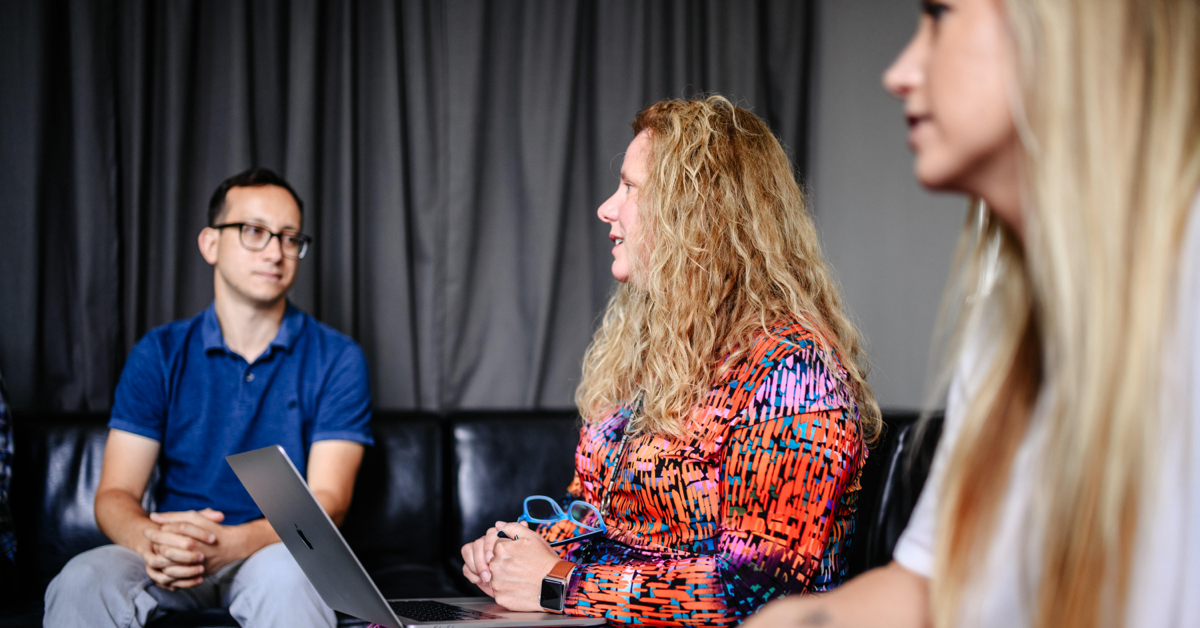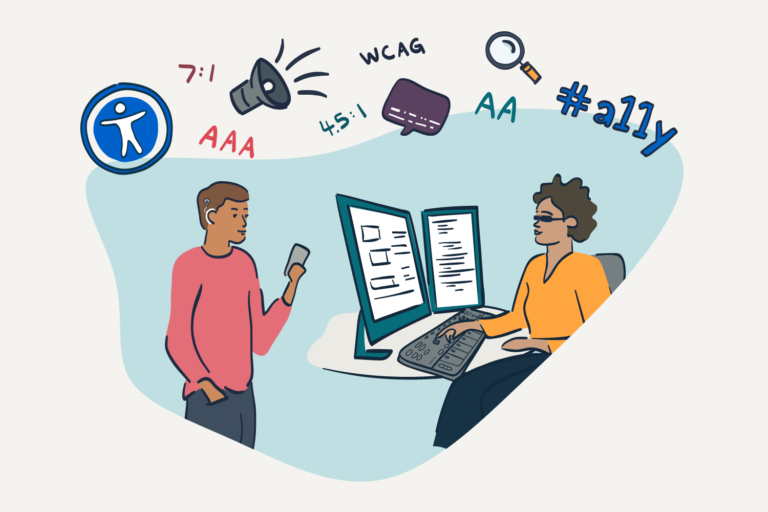Leading the way to digital accessibility: 6 simple strategies for leaders

As we round out Accessibility Awareness Month, I’ve been forming some thoughts around what organizational leaders must do to create a culture where designing and building accessible things is a routine rather than an afterthought. Over the past year or so, I’ve spoken with more clients about our approach to accessibility than ever before. The answer for us is easy: our designers and technologists make things accessible by default, not by request. There’s no added expense. When you strive to make things accessible and inclusive from the get-go, the effort is generally the same.
I’m exposed to a wide range of designers, content strategists, developers, and software engineers at Think Company, in my engagement with the community, and interactions with our client teams. As I learn more from these folks, I see that the accessibility issues we encounter in the world are caused by a lack of leadership—not a lack of interest. Our communities want to make things that work. If someone experiences a barrier to something we created, then our work is not done.
As a leader in your field, it’s your responsibility to look beyond the short-term friction that comes from prioritizing accessibility to understanding the bigger picture—as well as the many long-term organizational benefits of holistically folding accessibility into your digital roadmap. Below, I outline some key points about digital accessibility and inclusion that I wish I could share with every leader in our industry, and beyond.
Accessibility is for everyone, not just a small population
As my father’s Parkinson’s disease progressed, I started to observe the world differently. Although I have known many people who use assistive devices to navigate the world, I hadn’t taken the time to fully consider the range of unnecessary obstacles inserted into the world through thoughtless design and execution.
In recent years, it’s become more personal for me. As I age, I find it difficult to read small or low contrast text due to a combination of a lifetime of poor eyesight, middle age, and almost 40 years of staring at pixels.
Often, accessibility is seen as a large effort for a small population, when in reality, only a tiny fraction of the population makes it through life without experiencing a disability.
Designing for a small fraction of your target audience is malpractice, not to mention non-inclusive. Until organizational leaders grasp that, we’ll continue to see inaccessible products and services propagate.
Accessibility is a part of good organizational leadership
My first piece of advice for leaders in any organization is to read Lucia’s post, Creating an Accessible Organization. Every leader’s job in product, design, and technology leadership is to actively establish a culture where inaccessible work is incomplete work.
One way to accomplish that is for technology leaders to ensure accessibility tickets are among the highest priority blockers to any launch, upgrade, or patch. Yes, it will be painful to delay a launch because something slipped through, but it only takes a few painful launches to set a cultural standard to head off accessibility issues altogether.
Design education leaders must champion web accessibility, too
Back when I taught design, I would take points off for poor grammar and typos in student work. Some of my students would argue that they were designers, not writers. My response was twofold: first, your success as a designer is dependent on your ability to communicate, so you should strive to remove all barriers to clear communication. Second, grammar and spell checkers are built into your software, so there’s no excuse.
Instructors in the design field should treat accessibility the same way. Almost every program that educates professionals has a set of standards they teach their students to abide by—finance, electrical, law, carpentry, medicine, plumbing, welding, you name it. It’s high time design and technology education follow the same approach. The fact that many design programs have come from fine arts programs is no excuse. If you’ve built a program to educate future designers and technologists, you are responsible for educating them on the standards of their craft.
At the very least, every design and technology program should have a required course of study on accessibility covering standards, laws, tooling, and process. Exercises should cover the two types of accessibility challenges we encounter every day: fixing inaccessible things, and building accessible things from the ground up.
Six simple things organizational leaders can do to support digital accessibility
I’d like to give every product, design, and technology leader a little homework as we reflect on Accessibility Awareness Month. Ask yourself, “what examples can I set to make accessibility a priority in my organization?” Here are a few to consider:
- Review your professional development budgets to ensure your team has access to training and certifications in accessibility.
- Ask for regular reports on the accessibility issues in your backlog, then work with teams to prioritize accessibility issues over others.
- During code reviews, ask how the work performed against standard accessibility tests.
- Be as engaged and passionate about the accessibility of your work as you are about the “fun” stuff everyone has opinions on, like color palettes, logos, and new features.
Get your accessibility audit
Let’s uncover areas for improvement.
- Watch the Oscar-nominated film Feeling Through and the supporting documentary. It will give you a new appreciation for the great lengths your fellow humans go through to navigate the world.
- Stay in the know and learn how AI and accessibility might work together or against each other. A lot is changing rapidly, and as mentioned, accessibility can be an afterthought. We’re seeing that with the creation and adoption of AI technologies. Make sure you understand the implications.
I also want to thank our technology educators for taking on the challenge of preparing people for this industry. Your job is difficult and often unrecognized, but you have more power to change how we all work than most folks recognize.
Get on board now and avoid being left behind
Investing the time and energy into learning about and implementing accessibility practices can be a tough pill for leaders to swallow, but it’s essential that you get started. If not, the world will move on without you, and you’ll soon be even more behind—finding yourself in the position of having to make up for years of lost time, effort, and digital improvements.
Introducing people to the practice of making things accessible as early as possible means our industry has fewer bad habits to fix—and this ends up being less expensive and time consuming for organizations in the long run. We can all solve the problems we’ve created together as long as we share a common goal.




